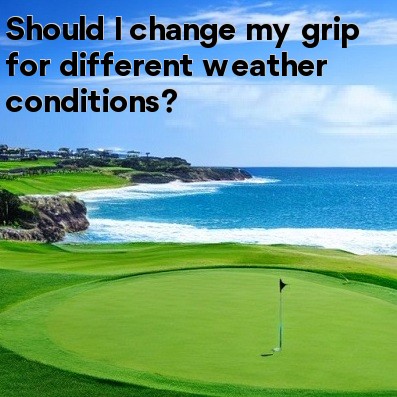
Should I Change My Grip for Different Weather Conditions?
In golf, the grip is one of the fundamental aspects that can greatly impact the outcome of your shots. It is essential to have a strong and stable grip to maintain control and generate power. However, when it comes to playing in different weather conditions, such as rain or extreme heat, some golfers wonder if they should alter their grip to adapt to these factors.
Changing your grip for different weather conditions can be a personal preference. Some golfers find that altering their grip helps them maintain control and perform better in challenging weather. Here are a few considerations to keep in mind:
- Rainy Conditions: Playing in the rain can make the club and your hands slippery. To counter this, some golfers opt for a slightly stronger grip. This means positioning the club more into the fingers of the top hand, creating more pressure between the palms and the club. This grip modification ensures a tighter connection with the club, reducing the chances of it slipping or releasing prematurely during the swing.
- Moisture and Humidity: In humid conditions, the grip can become sticky due to moisture in the air. This stickiness can cause the hands to become too tight on the club, limiting wrist action and overall feel. To combat this, golfers may prefer a slightly looser grip, allowing for more freedom in the wrists and hands. Additionally, using a grip enhancer or a towel to wipe away excess moisture can help maintain a consistent grip.
- Hot and Sweaty Conditions: Playing golf in extreme heat can make the hands sweaty, leading to a loss of grip and control. To control this, some golfers choose to wear gloves or use grip enhancers to prevent excessive sweating. Gloves with moisture-wicking properties can help absorb sweat and maintain a consistent grip throughout the round. Alternatively, using grip aids or applying talcum powder can reduce sweat and improve grip stability.
While altering your grip for different weather conditions can be beneficial, it is important to note that consistency is key in golf. Changing your grip too drastically or frequently can negatively impact your performance. It is essential to find a balance between adapting to the conditions and maintaining the muscle memory associated with your regular grip.
Consider experimenting with different grip adjustments during practice rounds to see what works best for you. By doing so, you can develop a sense of how changes in grip pressure or positioning can affect your ball flight and overall control.
Ultimately, the decision to change your grip for different weather conditions is a personal choice. Some golfers may find it necessary to adjust their grip to maintain control and optimize performance, while others may prefer to stick with their regular grip. The key is to find what works best for you and to practice consistency in your grip to ensure optimal results on the course, regardless of the weather conditions.
In conclusion, altering your grip for different weather conditions can be beneficial in maintaining control and improving performance. However, it is crucial to find a balance between adapting to the conditions and maintaining consistency. With practice and experimentation, you can determine the grip adjustments that work best for you in various weather conditions. Remember, the key is to find a grip that provides stability, control, and comfort throughout your round.





